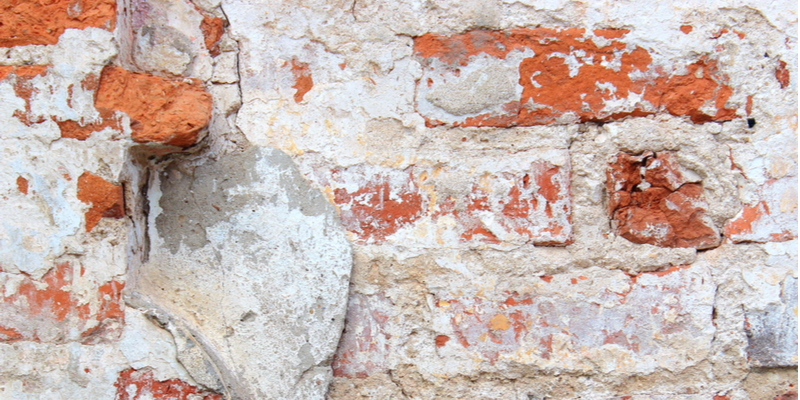A bulging brick wall is a common issue in Toronto. It is caused by excess water getting inside mortar joints. In addition, it can occur if the anchors responsible for holding a brick wall together succumb to rust and result in the wall loosening and bulging. Think of potholes in the road, which form very similarly to a bulging brick wall.
Usually people notice a bulging brick wall at the end of winter. It is important to conduct repairs as soon as you notice the problem. Otherwise, the wall is at risk of complete collapse and/or detaching from the building.
Snow, water and ice will accumulate behind a bulging wall, and in addition, any humidity will weaken the structure even faster, increasing the risk that it collapses.
Common causes of bulging brick walls:
- A buildup of humidity or moisture behind the wall that turns to ice during winter months.
- Mortar joints deteriorate and allow excess water to get inside the structure
- Rusty support anchors within the wall
- Cracks forming in the wall or structure
Can You Fix a Bulging Brick Wall?
It depends on the extent of the damage. In some cases, you can fix the issue but in other instances, it will require rebuilding all or a portion of the wall. A professional mason will be able to assess the damage, identify the cause, and offer the best possible solution(s).
In minor cases, a professional can inject grout behind the wall to sufficiently address the problem. The grout works to improve the overall strength of the wall, while filling in voids where mortar has decomposed. This will prevent bulging.
For a temporary fix, metal plates or special screws can be installed for additional support.
In more severe cases, brick must be removed and reinstalled. While some people will choose to only repair a section of the wall, it’s typically recommended to fix the entire wall. Even if only a portion of the wall is bulging, it still weakens the entire structure. Therefore, by targeting only a few problem bricks, you may be faced with the same issue in time. Fixing the entire wall will prevent you from conducting the same repairs in the future.
How Long Does It Take to Fix?
The time it takes to conduct repairs will depend on the extent of damage, how much of the wall needs to be repaired, and how large the wall is. Generally speaking, it may take a few days to complete the repair. The process includes installing scaffolding, removing portions of damaged bricks, cleaning and replacing them (if it is possible to reuse existing bricks), installing anchors, and putting back together all pieces of the wall.
Signs of a Bulging Wall
-Unusual swelling on a brick or stone wall
-Windows are not level and seem higher than normal
-Doors are not opening or closing properly
Bulging walls are more likely to occur following periods of extreme temperature fluctuations, so during freeze-thaw cycles make sure to regularly check brick work for signs.
Can You Prevent Bulging Walls?
You can help prevent bulging walls from happening in the first place. For starters, pay special attention to cracked or crumbling mortar joints and fix them as soon as they appear. Brick is naturally porous and can therefore take in and let out moisture. Yet, cracks in the masonry will allow too much moisture to get inside, leading to clumps of ice in the wall that expand when frozen and then decrease in mass when thawed out – this puts a lot of pressure on walls.
Need help repairing, diagnosing or preventing bulging walls in Toronto? Call Turnbull Masonry today!

